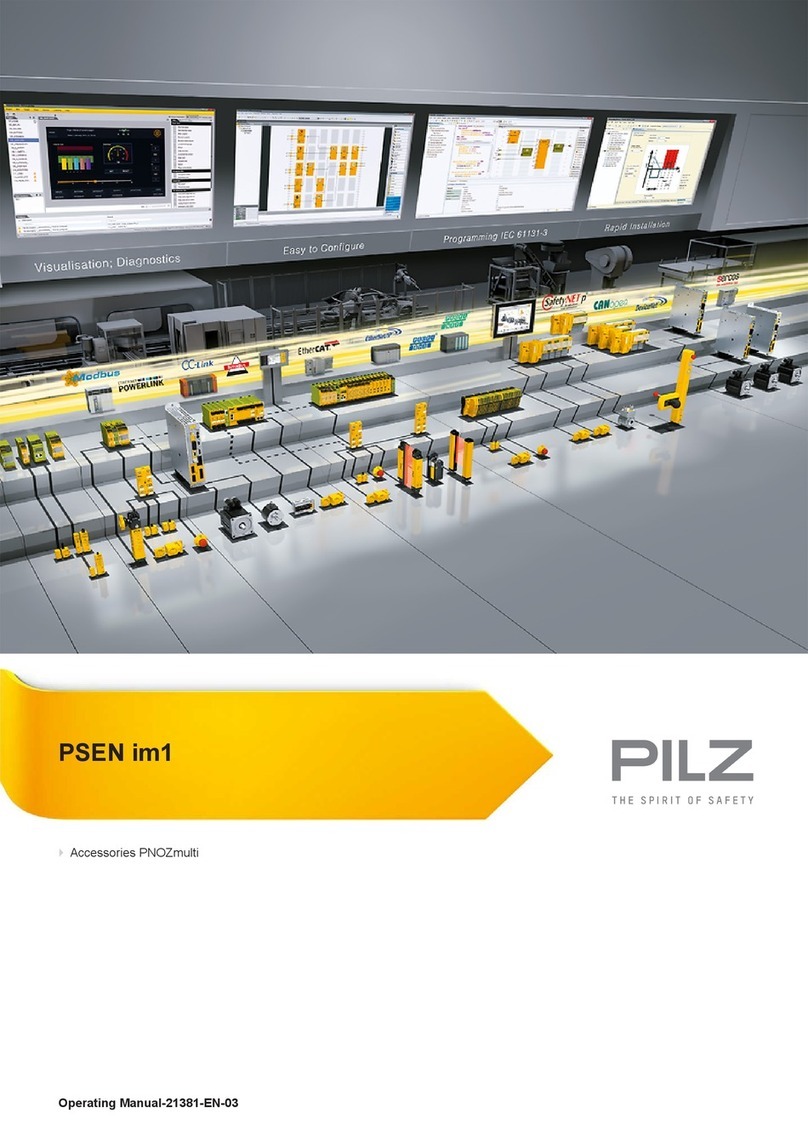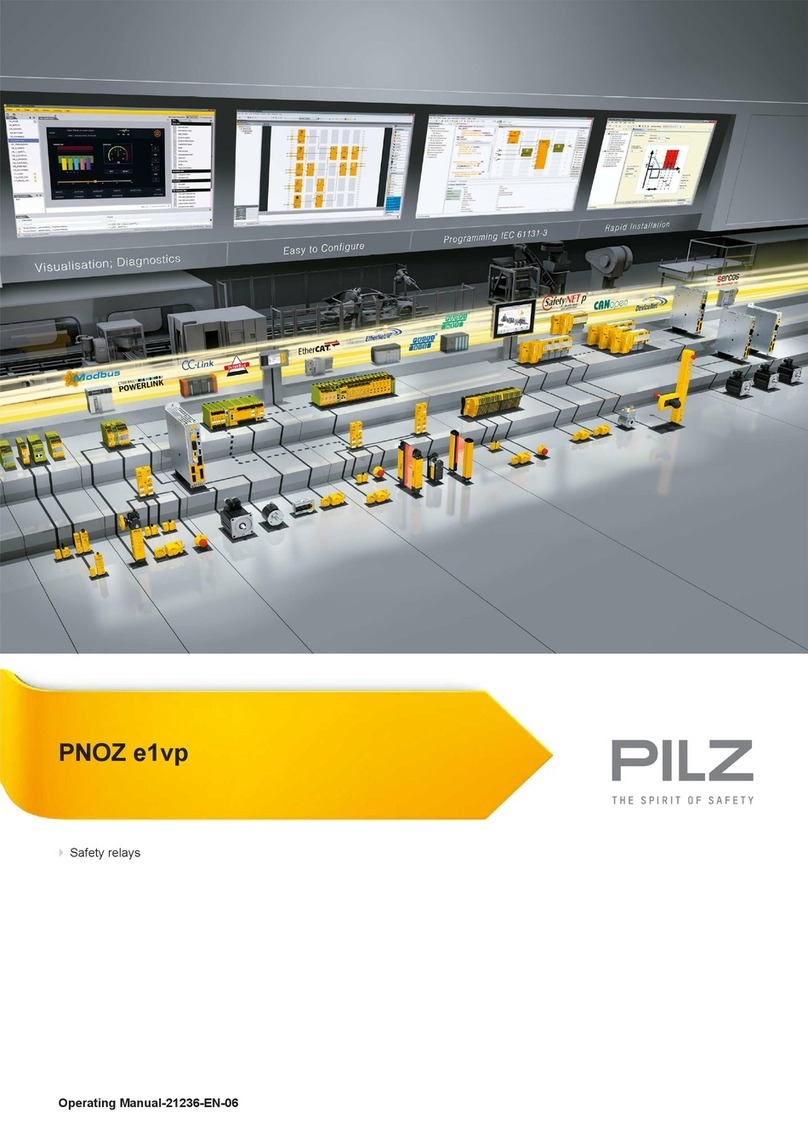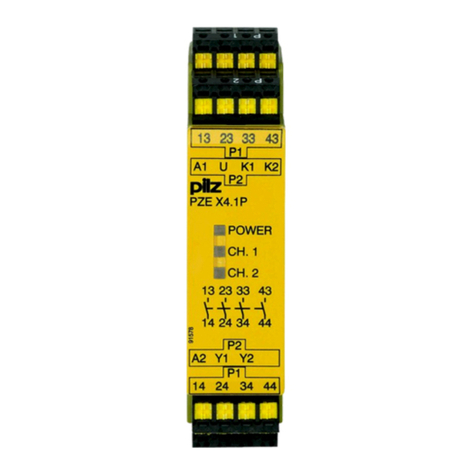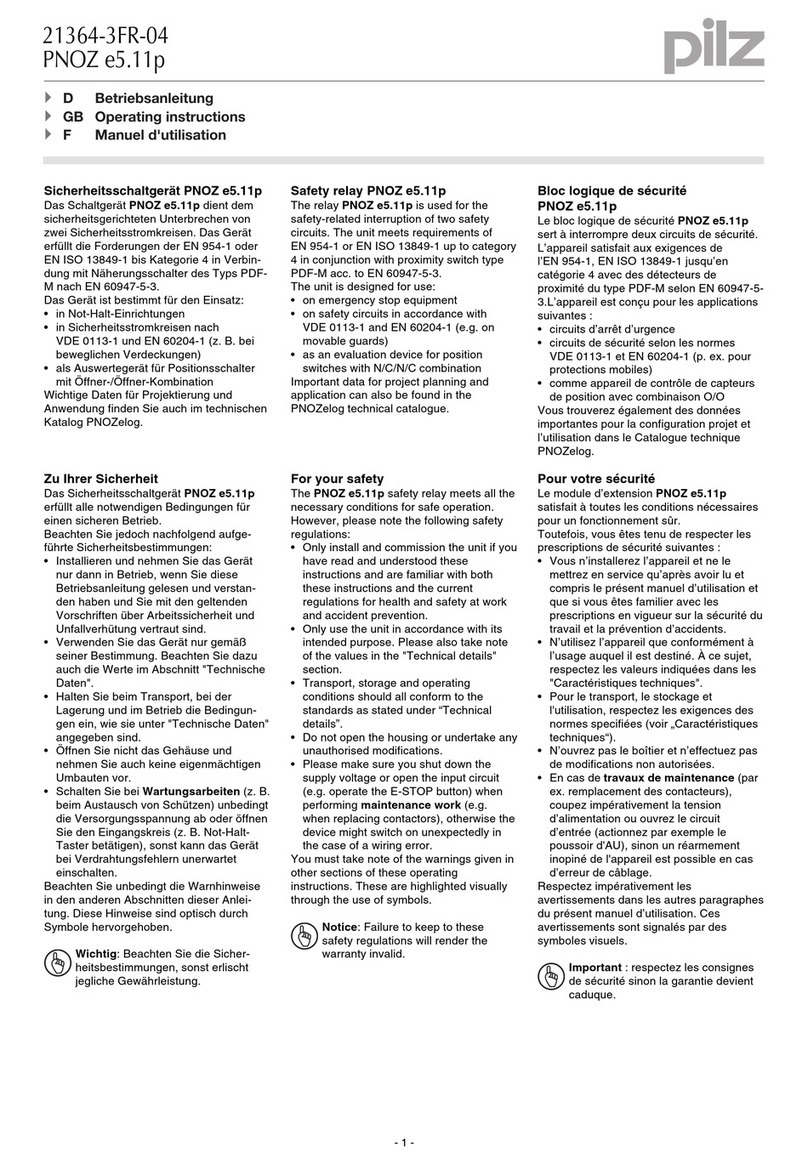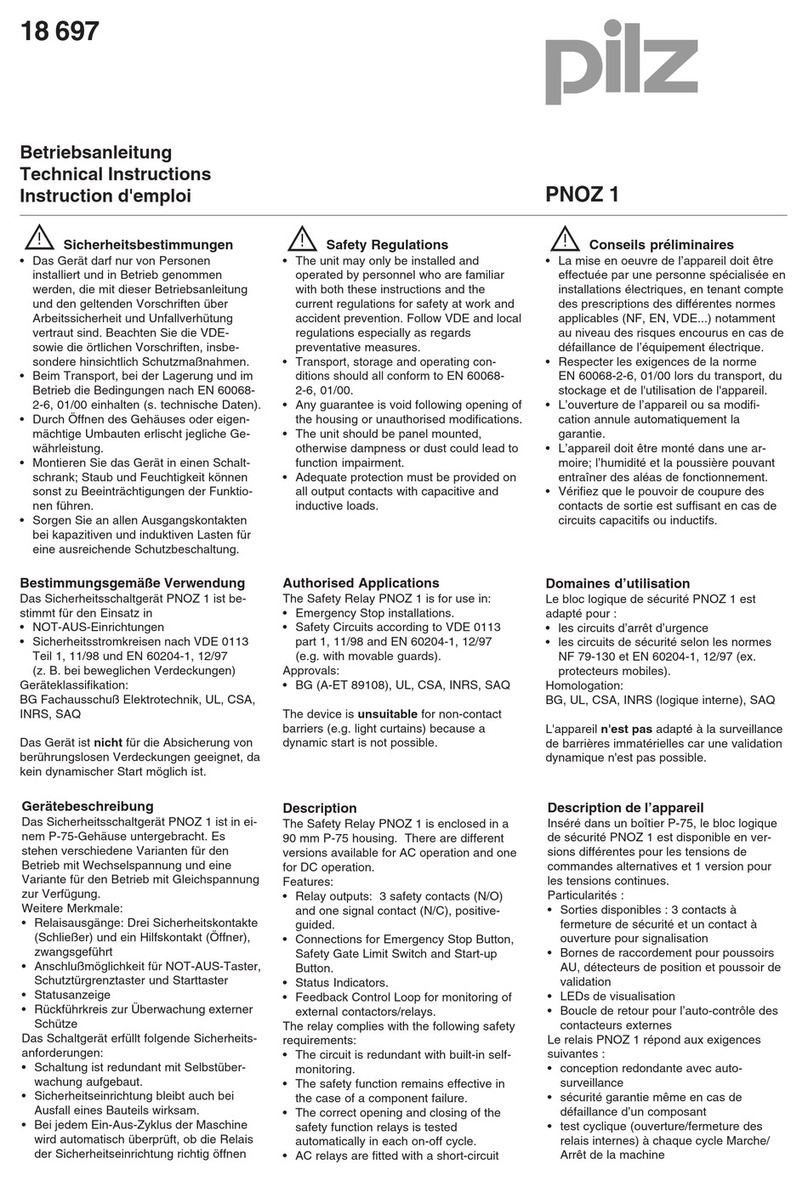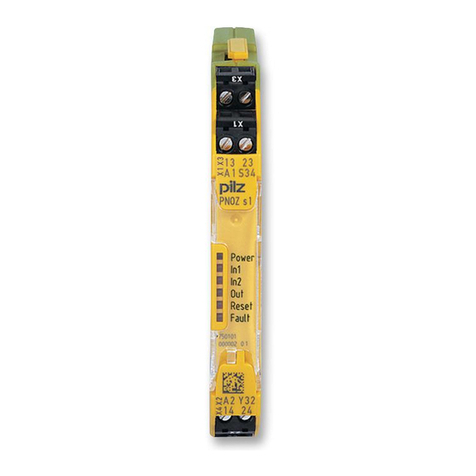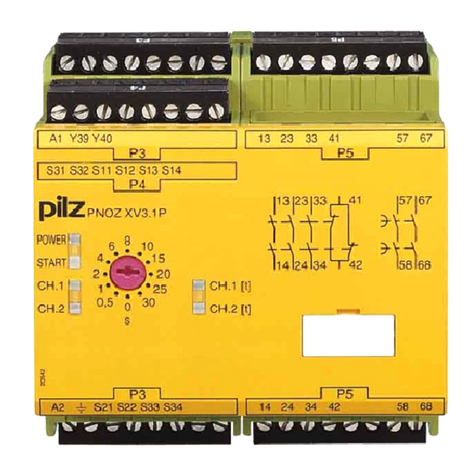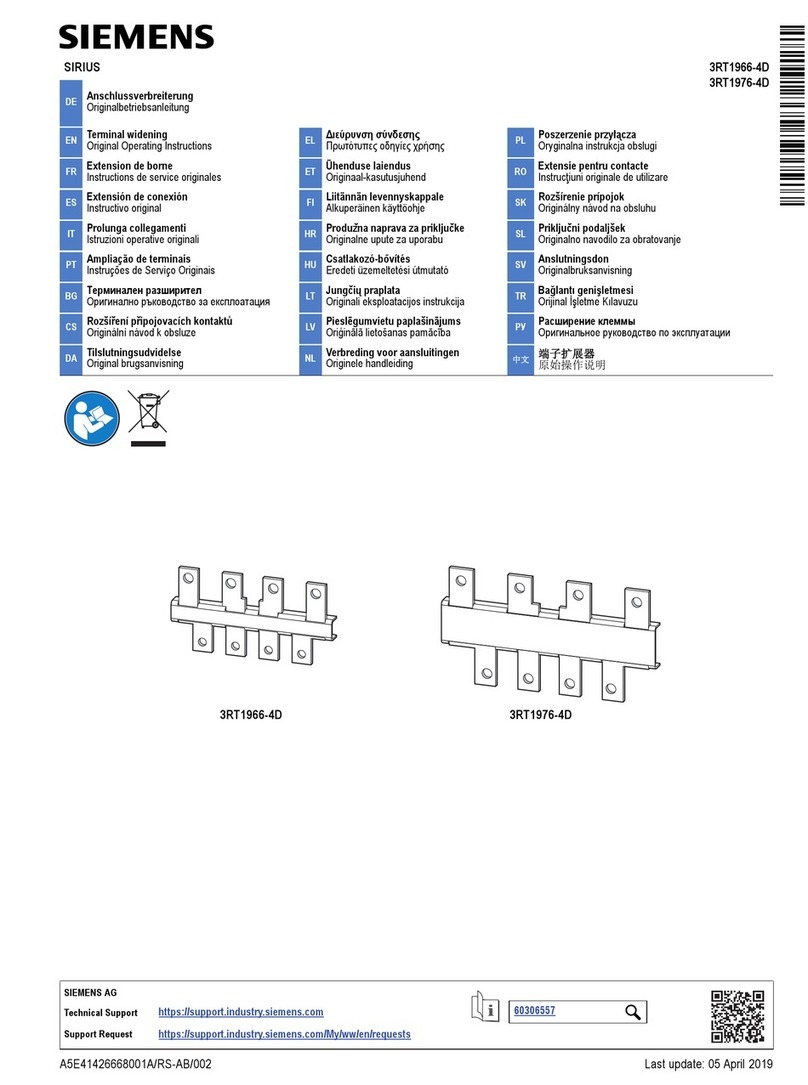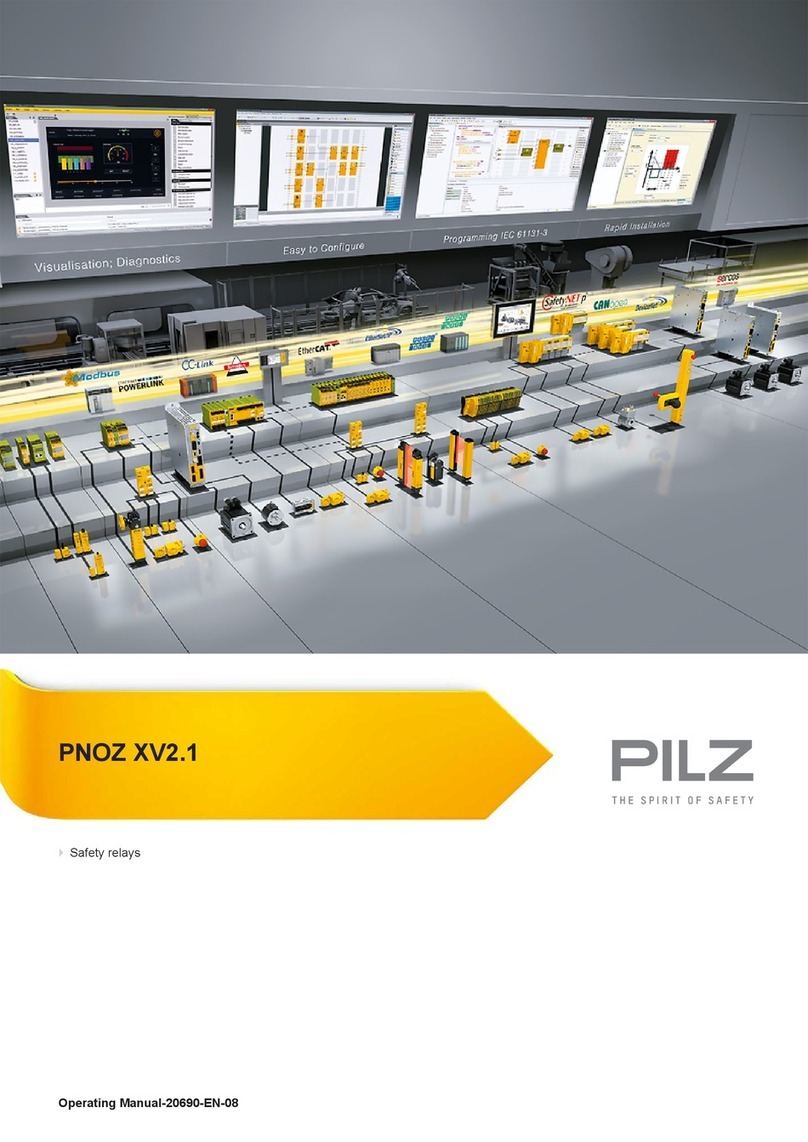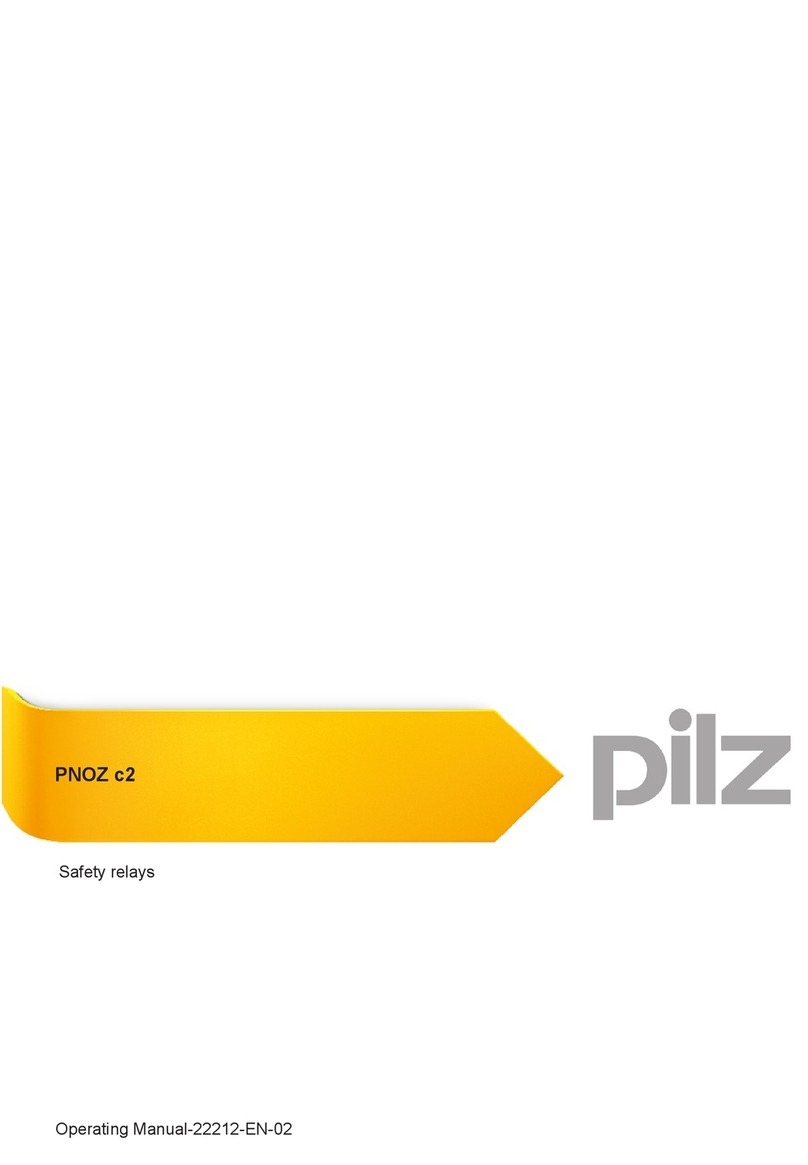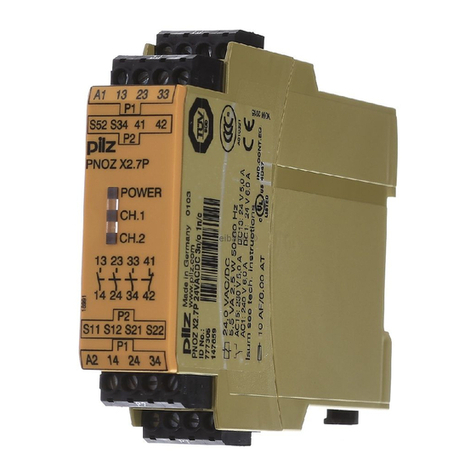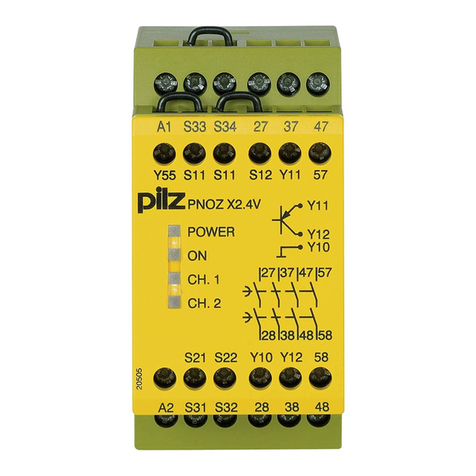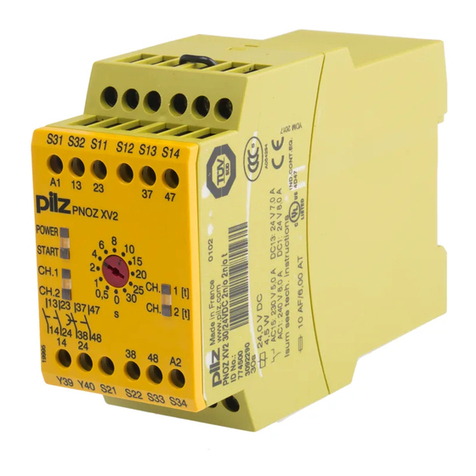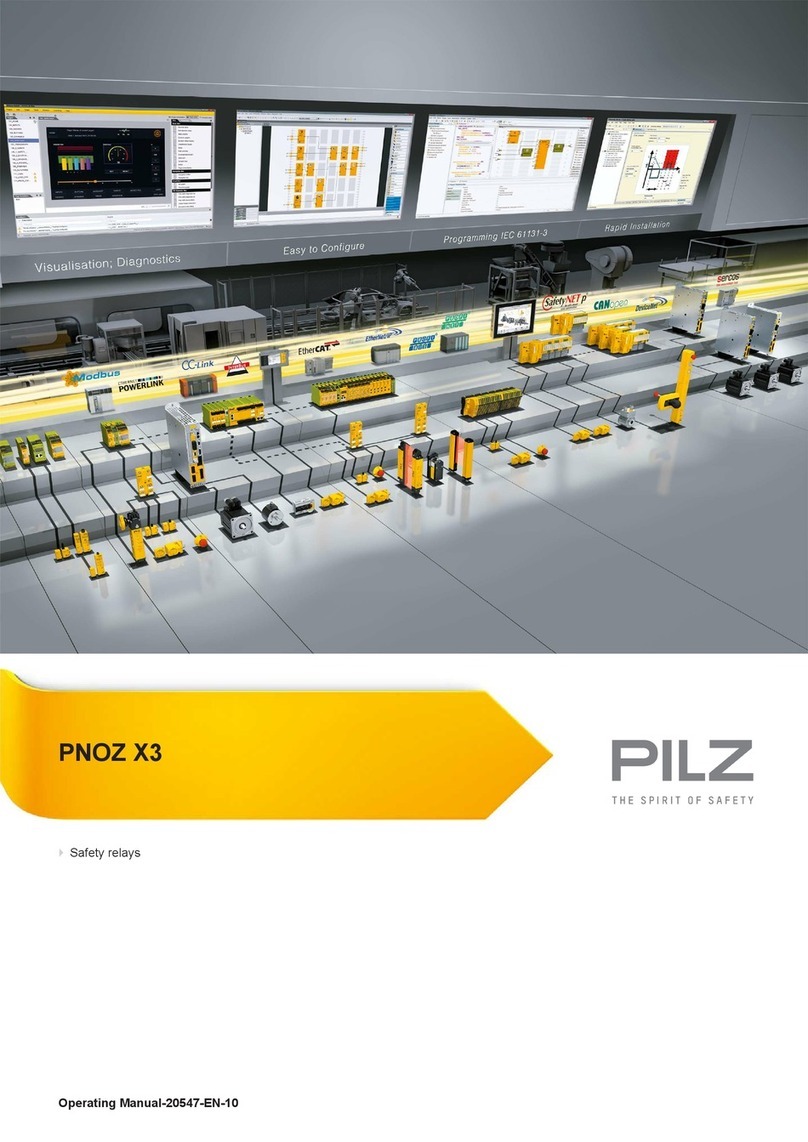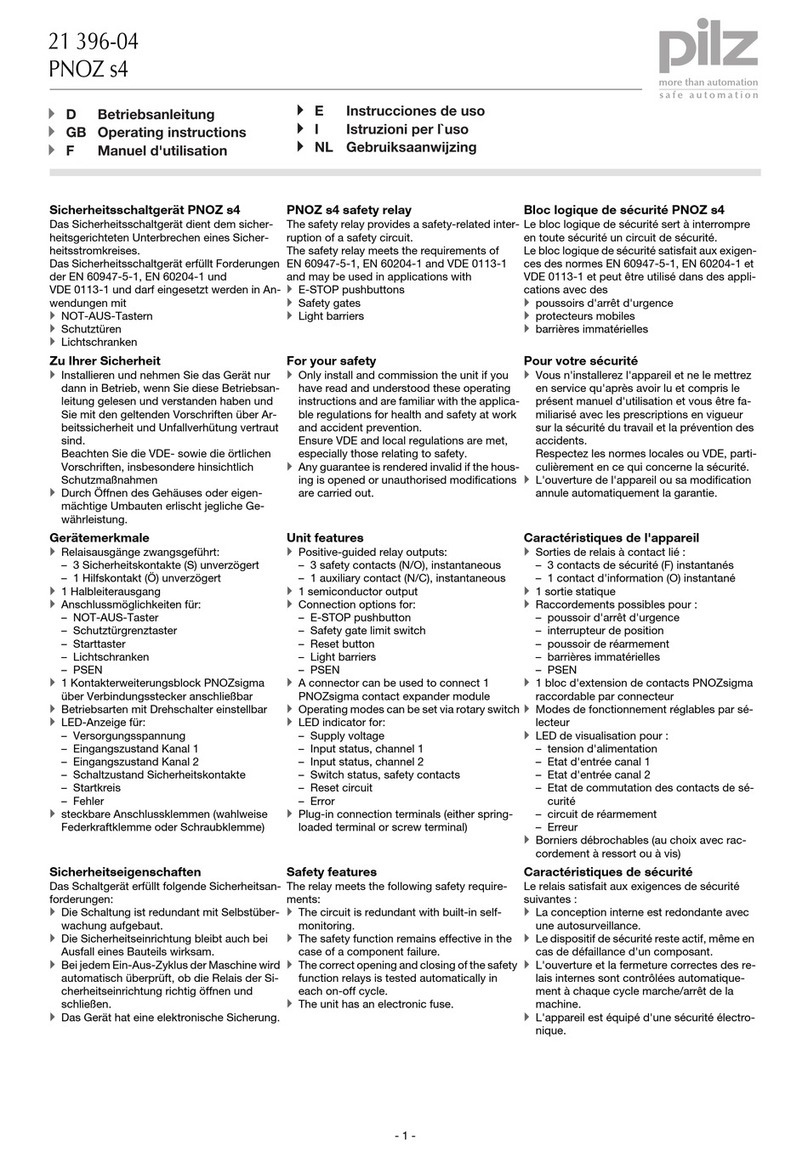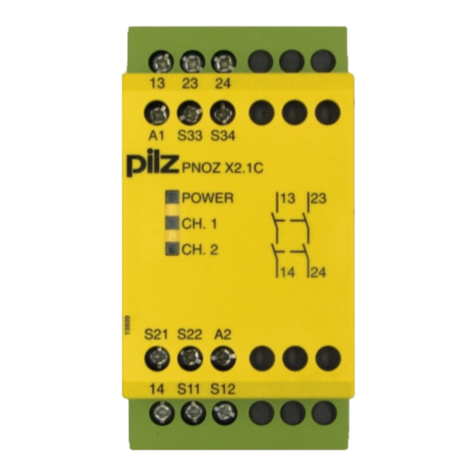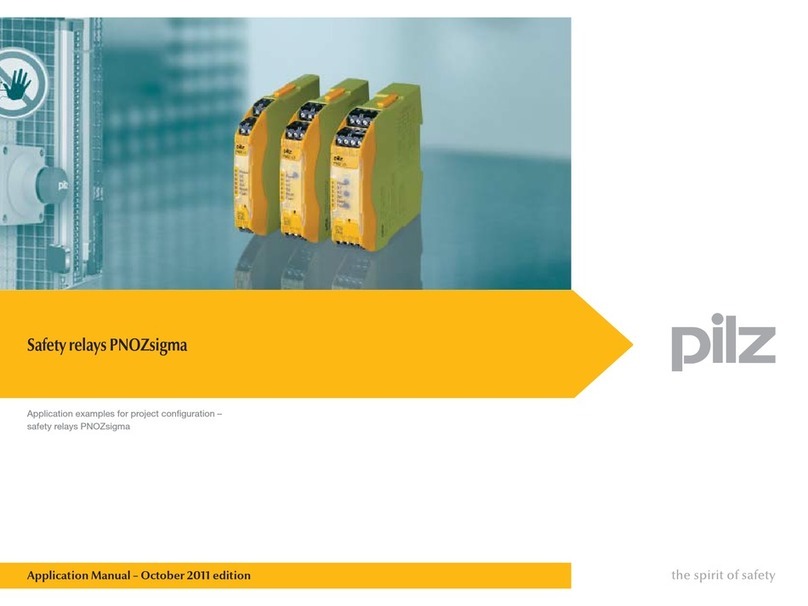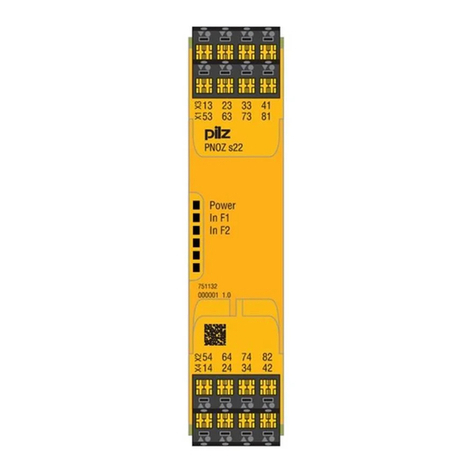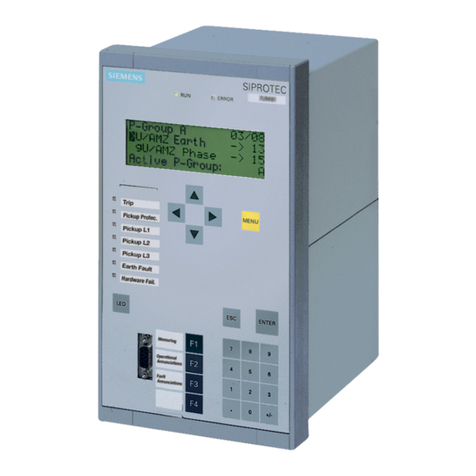
Contents
Operating Manual PNOZ X3.2
21147-EN-11 | 3
Introduction ............................................................................................................................4
Validity of documentation ..........................................................................................................4
Using the documentation ..........................................................................................................4
Definition of symbols .................................................................................................................4
Safety ......................................................................................................................................5
Intended use .............................................................................................................................5
Safety regulations .....................................................................................................................5
Safety assessment....................................................................................................................5
Use of qualified personnel.........................................................................................................6
Warranty and liability.................................................................................................................6
Disposal ....................................................................................................................................6
For your safety ..........................................................................................................................6
Unit features ...........................................................................................................................7
Safety features .......................................................................................................................7
Block diagram/terminal configuration .................................................................................7
Function Description .............................................................................................................8
Operating modes.......................................................................................................................8
Timing diagram .........................................................................................................................9
Installation ..............................................................................................................................9
Wiring ......................................................................................................................................10
Preparing for operation .........................................................................................................11
Operation ................................................................................................................................13
Status indicators........................................................................................................................13
Faults – Interference ..............................................................................................................14
Dimensions in mm .................................................................................................................14
Technical details ....................................................................................................................15
Safety characteristic data..........................................................................................................19
Supplementary data ...............................................................................................................19
Service life graph ......................................................................................................................20
Order reference ......................................................................................................................20
EC declaration of conformity ................................................................................................21
UKCA-Declaration of Conformity .........................................................................................21
